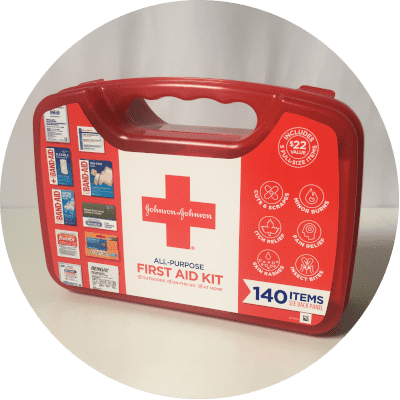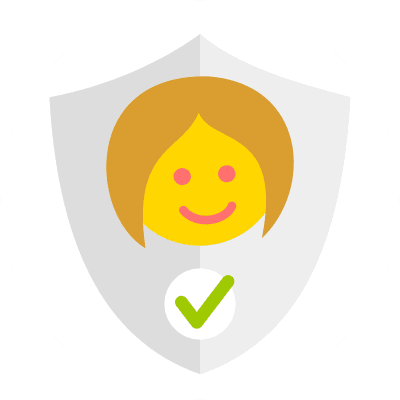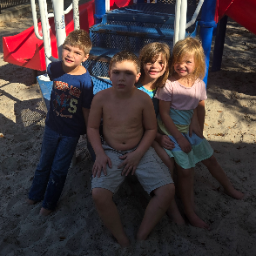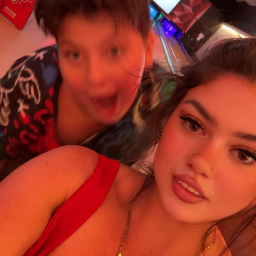Kids Water Safety (25 Tips All Babysitters Should Know)
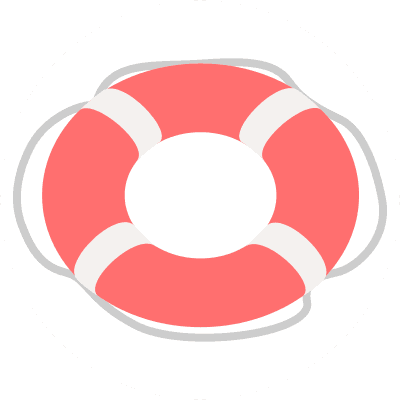

Written & Illustrated by
Matthew James Taylor
Kidsit Founder, General Manager

Medically Reviewed by
Gina Maria Jansheski, MD, FAAP
Board-Certified Pediatrician, Medical Reviewer
Key Takeaways
- Constant Supervision is Crucial: Never leave children unattended near water, even for a moment. Always keep them within arm's reach to ensure their safety.
- Limit Distractions: Avoid using your phone or engaging in activities that divert your attention when supervising children around water.
- Recognize Drowning Signs: Be aware that drowning is often silent. Look for signs like a child's head being low in the water, gasping for air, or appearing unusually quiet.
- Know Emergency Procedures: Familiarize yourself with how to perform CPR and how to contact emergency services in case of an emergency.
- Educate Children on Water Safety: Teach children basic water safety rules, such as not running near pools and always swimming with a buddy.
Young children can drown in as little as 20 seconds, even in shallow water. Most kids drown when the person watching them turns away for just a second or has no idea that their child is near the water, to begin with.
That's why it's critical for you as a babysitter to know some basic water safety tips. Toddlers are especially at high risk since they're fast and yet not old enough to understand the dangers.
In this article, you'll learn the specifics for how to protect kids around water. It's the information you need to keep children in your care safe.
Where Do Water Safety Tips Apply?
Water safety tips aren't just about large, deep bodies of water, although those are certainly important. Be sure to be extra vigilant whenever you're babysitting kids in and around the water, including:
- At the beach
- In the pool
- In the bathtub
- In inflatable kiddie pools
- Around streams, creeks, or ponds
- Around buckets, containers, and toilet bowls
- At water parks, even with paid lifeguards on duty
Some of these tips may seem scary or even overdramatic. But the fact is that it only takes a moment of inattention on your part for a child to get hurt around water, become submerged, or drown while you're babysitting.
Water Safety Qualifications
Not all babysitters are water safety qualified, that means if you do the training, you will have an advantage over your competition!
Parents prefer well qualified babysitters and are more likely to offer them work.
Kidsit babysitting statistics
How many babysitters are water safety qualified?
| Credential | Percent |
|---|---|
| 25.48% | |
| 24.74% | |
| 14.78% | |
| 12.49% | |
| 8.88% | |
| 8.36% |
See our complete list of babysitting qualifications.
(Babysitting statistics calculated weekly from our live member data — Updated 21 Dec 2025)
Create a babysitter profile on Kidsit for free and make sure you list all of your credentials.
Already have a profile? Don't forget to update it when you gain new qualifications.
1. Provide Constant Supervision
It might sound like hyperbole, but water safety is literally a matter of life and death, especially when it comes to young children who don't yet know how to swim.
The #1 water safety tip I can give you as a babysitter is to try your best to provide constant supervision and do everything you can to avoid getting distracted. Just remember, everything else can wait. The kids are the most important when they are your responsibility.
2. Keep Kids Within Arm's Reach
You should keep the kids you're watching within arm's reach 100% of the time. Give them your full attention, especially if you're babysitting kids that you know are inexperienced, or if you're not sure how comfortable they are around water.
Take the kids with you if you need to leave the pool or beach for any reason. Whether you're going to the bathroom, getting a snack, or just hopping out for a couple of seconds to grab a toy, make sure they are nowhere near the water.
When children are a bit older, and you know they've taken swimming lessons and know the basics (like floating, treading water, and swimming longer distances) and can get out of the pool on their own, then you might be able to get a little further away while always keeping them in sight. But for peace of mind, I would stay within arm's reach as a babysitter. The cost of getting distracted or making a mistake is too high. And kids of all ages can get tired, swallow water and become panicked, or get stuck underwater.
3. Don’t Let Your Phone Distract You
If you're sitting at the side of the pool or on a towel at the beach, it can be tempting to reach for your phone. But this can be a distraction that makes you look away long enough for a child to slip below the water.
If you're playing a game, watching a video, or using an app on your phone, it can be easy to get engrossed in the activity and lose track of time for several minutes without being aware of it. It only takes a few seconds for a child you're watching to disappear from your sight.
Just because you won't be using your phone while watching the kids swim doesn't mean you shouldn't have one nearby though. You should have a phone charged and easy to access in case you need to call 911 in an emergency. Turn your phone to Airplane Mode so that it won’t distract you, but will be ready with one click if you need it.
4. Know the Signs of a Drowning Child
When a child is drowning, it's not like what you might imagine or see in movies or on TV.
There's no flailing of arms and splashing. They don't get a chance to yell for help before they quickly sink beneath the surface. By the time they realize that they're in trouble, it's usually too late. Many times they just quietly go under.
Here are some signs to look for that may indicate that a child is drowning:
- They're unusually quiet
- Their head is low in the water
- They're gasping for air
- They have glassy-looking or closed eyes
- Their hair is covering their eyes
5. Know What to Say When Calling 911 (000 In Australia, 999 in the UK)
It's a call that you hope you'll never have to make. But if you do need to call for emergency services, what do you say?
It's important to stay calm and speak slowly. Try to get the message across clearly the first time, since repeating yourself will take up extra precious seconds.
Start by giving your address or other details about your location. It's always important to know the address of the home you're babysitting at, or anywhere that you'll be taking kids that you're watching. It's also a good idea to know the closest major intersection.
Give the operator a short description of the accident or injury, such as if someone is unconscious or bleeding. Avoid any long explanation or story about what happened. Let them know what services you require (medical, fire, or police.)
Answer any other questions the operator has. Ask for an ETA (estimated time of arrival) if they don't give you one. This will let you know how many minutes it will be until help arrives.
Always stay on the line until the operator tells you that it's okay to hang up. They might walk you through instructions for performing first aid or CPR if needed.
If you aren't sure if a situation warrants calling 911, such as if a child hits their head and is bleeding, it's better to just go ahead and call. The number should be used when you need help right away, and should not be used for non-emergency situations, but it's better to be safe than sorry if you aren't sure.
See our complete guide to emergency numbers and Download our free emergency contact sheets so you have all the important numbers if ever you need them!
6. Have First Aid and CPR Training
The combination of slippery conditions and a hard concrete surface around swimming pools can lead to all kinds of nasty slips and falls.
I recommend that all babysitters have first aid and CPR training regardless. But it's especially important if you're going to be around water since it's a more high-risk activity.
Having the right training will mean you'll know exactly what to do in most situations, ranging from scrapes and bruises to the child you're watching hitting their head and becoming unconscious.
Once you have first aid and CPR training, don't forget to keep them up to date! Your certifications have an expiration date, and you need to take a refresher course every few years.
7. Don't Treat Water Wings Like a Life Preserver
The only floatation devices that are approved to keep children safe in the water are well-fitting lifejackets. Make sure that they have been approved by the Coast Guard or a similar trusted organization.
It's okay to let kids use water wings, pool noodles, and other floatation devices while they're under your direct supervision, but don't expect these toys to keep weak swimmers from drowning.
Only a life preserver or personal floatation device will keep a child upright or on their back with their face out of the water.
8. Know the Lesser-Known Water Hazards
Watching kids around the pool might seem obvious. But in the home, there are water hazards where drowning can happen too. Be sure to also take precautions in these potentially risky settings:
Baby bath rings or bath seats. Don't leave babies unattended in the bath, even if they're in a bath seat. They can easily slip down below the surface of the water, or the seat could tip over, and they could get trapped underneath.
Buckets and containers. As silly as it sounds, even a bucket of water being used to wash the floor can pose a drowning hazard for a toddler. They could fall headfirst into the bucket and not be able to back their way out. Even a drinks cooler filled with ice can be a risk.
Toilet bowls. Kids get curious about toilets, especially when they are around potty training age. When you are babysitting toddlers, keep the bathroom door closed and have the toilet cover down at all times, especially if the parents you're babysitting for don't have a safety latch on the toilet cover.
Bathtubs. A 6-year-old can bathe themselves, but you should still be nearby to hear them if they call for help or swallow water. Generally, kids under 5 should never be left alone in a bathtub, even while the bath is filling up. This is something you should discuss with the parents, however, to make sure you continue with their usual safe practices and preferences.
If you are expected to bathe kids before bed, we recommend you read our guide - 21 bath time tips for babysitters and download our handy bath time checklist.
Pet water bowls. A water source only needs to be large enough for a child to submerge their mouth and nose. So even a dog's water bowl is a hazard for babies and toddlers who are still crawling.
9. Watch Out for Inflatable or Plastic Pools
Small child-sized pools don't appear to be much of a risk to adults since they're so small. It seems like a child should be able to easily stand up or climb out if they get into trouble.
But it's easy for kids to get scared and not know what to do. They could slip and get a mouth full of water if you're not watching.
Unlike in-ground or above-ground pools, kiddie pools are only set up temporarily and don't have the legal requirements to be surrounded by fences or covers to keep kids safe.
If you let kids use a baby pool while you're babysitting them, make sure to completely drain it when they're done. Then bring it inside or put it away in a shed or garage. If you leave it outside, it can accumulate rainwater, which then becomes a future drowning hazard.
Make sure to continually watch kids even when they're just playing in shallow water. It only needs to be deep enough for them to put their face in for little ones to drown!
10. Just Say No to Large Groups of Kids
As a babysitter, you can't realistically keep an eye on more than two or three kids in the pool at once, especially if you haven't had any kind of formal lifeguard training.
Don't allow kids to go into the pool if they have friends over, especially for larger gatherings or parties. You simply can't be responsible for keeping track of 4 or more kids at once. With your attention split between watching so many kids, there's a much higher chance of missing something as it is happening.
11. Make Kids You're Watching Follow the Rules
To keep kids safe, you should have some basic water safety rules in place ahead of time. It is critical to enforce these, and any infractions mean the kids must stay out of the pool.
The rules are pretty straightforward. Some of them include:
- No swimming without an adult watching
- No running anywhere around the pool
- No pushing people in
- No pulling people underwater
- No diving into shallow water
12. Be Aware of “Secondary Drowning”
Secondary drowning was thought to be a condition that can happen up to 24 hours after a child inhales a large amount of water while swimming or bathing. Water left in the lungs can cause breathing difficulties and can even be fatal.
This has been blown out of proportion by the media and only occurs if there is an actual episode of drowning and the patient survives, not just if the kid gulped some water while playing (source).
If a child you're watching inhaled a large amount of water and never really recovers back to normal afterwards, watch out for continued symptoms such as chest pain, difficulty breathing or talking, or coughing later on.
You will want to let the parents know right away if the symptoms continue and you're worried so that they can seek medical care for their child.
13. Be Careful around Lakes and Ponds
Taking kids swimming in lakes, ponds, and streams comes with some unique risks.
Often you can't see the bottom of a pond or lake. So you don't know how deep the water is or what might be at the bottom.
Some ponds might hide sharp rocks, pieces of glass or metal, or other trash. So it's a good idea to have kids wear water shoes to protect their feet.
There could also be seaweed and grass that a child's legs could get tangled up in. Even strong swimmers can panic when they get caught in something, and struggling can only lead to getting more stuck.
Small bodies of water can also be breeding grounds for amoebas, E. Coli, and other types of bacteria and viruses. Larger lakes and ponds are safer in this respect, especially if they have a good inward flow of fresh water.
In stagnant ponds and lakes, it's probably best for kids to just stay out of the water entirely if it hasn't been tested and approved by a local health unit or water authority for swimming.
On the rare occasion that you might be taking kids on a boat, it's extra important to have each of them wear a life jacket and also wear one yourself. Even if you and the children are strong swimmers, the boat could tip over, and you could get trapped underneath it.
14. Wear Lots of Sunscreen
Have kids wear plenty of sunscreen whenever they go outdoors, especially around the water. The surface of the water can reflect sunlight and intensify its effects. The sunscreen should be reapplied frequently, according to the package instructions. And when kids are in the water, it comes off more readily, so set yourself a timer, so you’ll know when they need to apply a new layer of protection.
It's also a good idea for younger kids to wear a hat and even sunglasses.
And even if they aren't in the water, keep their skin covered as much as possible to limit exposure.
15. Make Sure Kids Drink Lots of Water
It seems counterintuitive since they're literally immersed in water. But kids still sweat and lose fluids even when they're playing around or swimming in the water.
It's important to make sure they take frequent breaks to drink water so they don't get dehydrated, especially if they're out of the water making sandcastles or doing some other fun activity.
16. Have Kids Get in Gradually
Ask kids you're babysitting to get into the water at the pool or beach gradually to make sure that it's a comfortable temperature.
Have them start by just tipping their toes in and see how the water feels.
If the kids get in the water and they're shivering, that could be a sign that the water is too cold to swim in for that day. Depending on the weather, if the water is too cold, kids are at risk of having muscle cramps that will prevent them from swimming or floating to safety.
So it's probably a good idea to skip swimming on colder days.
17. Don’t Swim in a Thunder Storm
If you hear thunder, swim time is over.
Get kids out of the pool or beach as soon as you can hear or see a storm approaching. This applies even if you don’t see any lightening.
Lightning is electricity that can strike at any time, and that's a bad thing to combine with a large body of water!
18. Don't Let Kids Swim in the Dark
The thought of getting into the pool or going swimming at the beach at night seems like a cool idea. But the darkness greatly limits your ability to supervise kids and make sure that they're safe. If one were to have trouble, you would not be able to see where they are.
Once it is dusk and the sun is setting, all swimming should be over for the day.
19. Take Breaks and Pack Snacks
Kids should get out of the pool every hour or so and hang out for 5 to 10 minutes, even if they don't think they need to take a break!
Swimming and splashing around takes a lot of energy, so have water and snacks available for kids to refuel a bit during their breaks. Bringing appropriate snacks for the beach in hot temperatures can be difficult. Pack things like dried fruit that will stay good in the heat and sun. Or you could bring a cooler to keep drinks, fruit, and veggies nice and cool.
You've probably heard an old saying that you shouldn't swim for 30 minutes or an hour after eating. The logic is that more blood is being used by your stomach and organs to digest food, so there's less in your arms and legs.
This has largely been debunked and is now considered a myth. Most doctors say that swimming right after eating is perfectly fine. Although I wouldn't recommend eating a very heavy meal before swimming as kids are more likely to throw up, especially if they swallow some water.
20. Watch for Drains, Openings, and Pipes
When you arrive at a pool, take note of where the drains and openings are so that you can pay special attention to them. Kids can sometimes find themselves getting stuck at these locations.
For kids with long hair (especially shoulder-length or longer), tie their hair up so that it won't accidentally get sucked into any of the water intakes around the edge of the pool.
21. Learn these Special Beach Precautions
In general, swimming is more difficult in the ocean than at the pool because of the weather, tides, temperature, and other conditions. So it's essential to stay close to the kids you're babysitting to make sure they stay safe.
It's easy for kids to get knocked over by big waves if you're at the beach. So it's best not to go to the beach on days when the water is too rough.
Some beaches have flags or a chalkboard to indicate what the water conditions are like, so try to find those and take note if you see them. If not, just go ahead and ask the lifeguard on duty (if there is one) to give you an update on the latest conditions.
Be aware of riptides and undertow as well. These water currents can quickly pull a child far out away from shore and out of your reach. The force of them can also suck a child under the surface and pin them to the ocean floor.
Keep kids in shallow water by the beach to minimize the risk of encountering these currents. It's a good idea to set a specific depth they're allowed to go to using their body as a measure, such as up to their waist, to prevent them from swimming out too far.
If you're in the ocean, there is wildlife to think about as well. You probably won't need to worry about encountering sharks while you're babysitting. But you should watch out for jellyfish and Portuguese man-o-wars, which can be several feet long and deliver a nasty sting.
22. Be Safe at Water Parks
Taking kids to a water park can be a fun day out while babysitting. There are tons of exciting activities for kids. However, there are also a lot of water-related risks to consider too.
If the kids you're babysitting aren't strong swimmers, it's best to have each of them wear a lifejacket.
Check to see if the kids are old or tall enough to go on each ride. And make sure there is a lifeguard on duty at each ride or attraction that the children want to go on.
23. Beware of Hot Water
Drowning isn't the only water hazard that you need to worry about.
Children have thinner skin than adults, so they can burn more easily. A few seconds of scalding hot water is enough to give a child a third-degree burn.
Before putting a child in a bath, test the water with the inside of your wrist to make sure the water isn't too hot. Do not just test the surface of the water, but plunge your wrist down inside to double-check before you ever let the child get in.
Letting young kids in a hot tub or jacuzzi isn't a good idea either. The water is often too warm, and they can overheat in just a few minutes.
24. Learn Baby Water Safety
Of course, drowning is always the primary concern when babysitting infants. But there are other considerations when you’re watching babies around water.
Infants are especially vulnerable to diseases that spread in the water.
Not only are babies susceptible to disease themselves, but leaky diapers can also spread bacteria and viruses to other swimmers. These bugs can cause nausea and vomiting, diarrhea, and dehydration.
So for the health of the baby you're watching and also others, it's best to keep babies out of public pools if they have diarrhea or some other kind of stomach-related illness.
If the baby is well, and you are heading to a public pool, make sure to use waterproof diapers and change the diapers in the changeroom frequently. Be sure to wash the baby off thoroughly after each diaper change, as well as your hands.
Refer to our complete guide to changing diapers for detailed instructions.
You should offer children you're babysitting frequent bathroom breaks even if they're already potty trained. When kids are playing in the pool, they are usually having so much fun they forget to stop when they have to go to the bathroom, and then, well, it’s so much easier to just go in the water.
After taking a baby swimming in a pool, you should wash their bodies and hair with soap and a mild shampoo to remove chlorine and other pool chemicals. Be sure to carefully dry their outer ears with a cotton ball or towel to help prevent them from developing swimmer's ear (source).
Babies shouldn't go swimming in water temperatures below 29℃ (85℉.) Their tiny bodies simply lose heat too quickly, and then they're at risk of hypothermia.
If you're swimming with a baby and their lips turn blue or they start shivering, you should remove them from the water immediately. Dry them off right away and wrap them in a towel or warm clothing.
25. Keep the Poolside Area Clear
Be sure to keep the deck around the pool clear of toys or other objects that can be a tripping hazard. Get kids to put away all extra toys when they're done using them and only have a few toys out at any given time.
Tripping around the pool could cause children you're babysitting to fall, and it's easy to hit their head or chip a tooth if they fall on the hard surface at the edge.
Due to kids getting in and out, it can get wet and extra slippery around the edges of a pool. But try your best to squeegee or mop up any big puddles that develop, which can add an additional slipping hazard.
When you're done using a family pool in a backyard, make sure to close the gate and lock it, if possible, to prevent kids from getting back inside the pool area.
Conclusion
When it comes to water and children, you can never be too careful.
As a babysitter, water safety should always be a serious concern, but you can stay on top of it more easily when you have the proper safety training, and you follow our tips.
Enjoy your fun in the sun!
Next:
